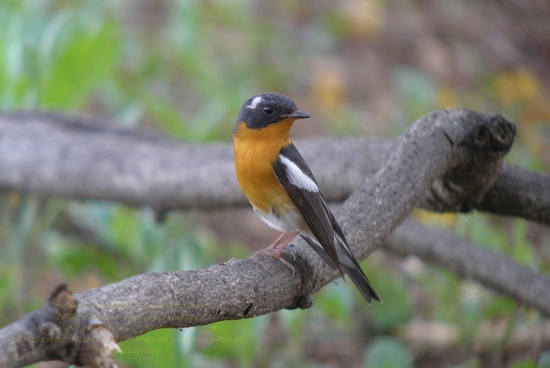(added picture of male) |
|||
| Line 1: | Line 1: | ||
{{incomplete}} | {{incomplete}} | ||
| − | [[Image:Mugimaki_Flycatcher.jpg|thumb| | + | [[Image:Mugmaki FC 3.jpg|thumb|550px|right|Photo by {{user|mohbhorn|mohbhorn}}. Location: Vachirabenjatas Park, Bangkok, [[Thailand]]]] |
| + | [[Image:Mugimaki_Flycatcher.jpg|thumb|400px|right|Photo by {{user|jweeyh|jweeyh}}. Location: Bukit Timah Nature Reserve, Singapore]] | ||
'''Alternative name: Robin Flycatcher''' | '''Alternative name: Robin Flycatcher''' | ||
;[[:Category:Ficedula|Ficedula]] mugimaki | ;[[:Category:Ficedula|Ficedula]] mugimaki | ||
Revision as of 17:51, 10 April 2009
| This article is incomplete. This article is missing one or more sections. You can help the BirdForum Opus by expanding it. |

Alternative name: Robin Flycatcher
- Ficedula mugimaki
Identification
13 to 13.5 cm. Black upperparts, short white supercilium behind the eye, white wing-patch, white edges to the tertials and white at the base of the outer tail-feathers. Orange red breast and throat, white belly and undertail-coverts. Female - grey-brown above, pale orange-brown breast and throat. No white in the tail, one or two pale wingbars rather than a white wing-patch and faint or absent supercilium. Young males are similar to the female but have a brighter orange breast, white in the tail and a more obvious supercilium.
Distribution
Eastern Asia and Siberia and north-east China. Accidental vagrant to Alaska with 1 record.
Taxonomy
Habitat
High altitude forest and woodland.
Behaviour
Its diet includes insects which are caught in flight.




